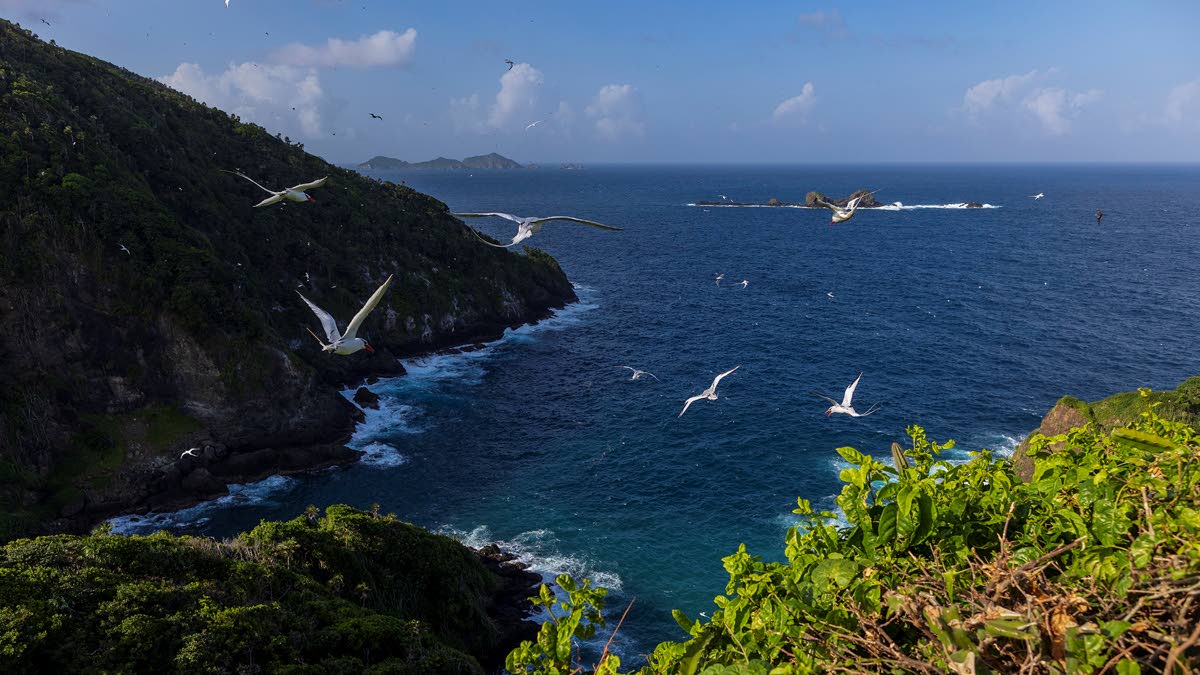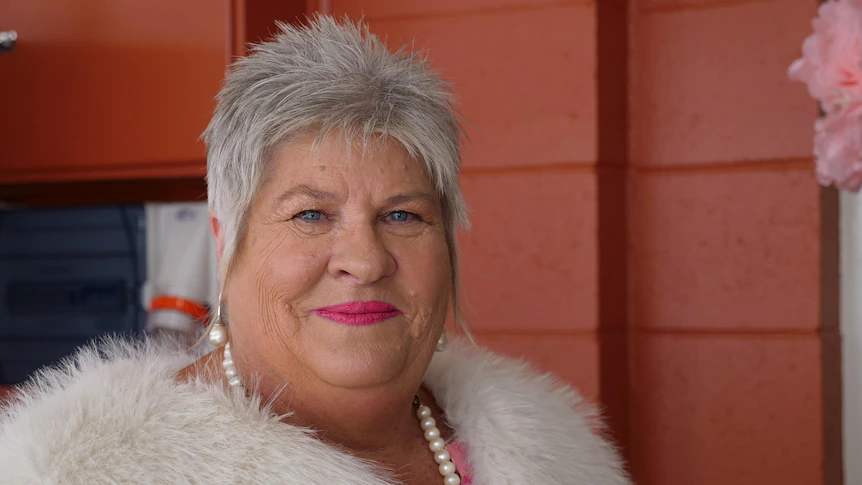By Newsday
Copyright newsday

Kami Allong and Alexandra Gray
This is the second part to the D Bocas series which looks at the Gaspar Grande, Gasparillo Island and the Off Tobago Islands
Gaspar Grande
Gaspar Grande, also known as Gasparee, is a small island composed primarily of Lower Cretaceous Laventille Formation limestone.
It is best known for the Gasparee Caves, a stunning natural limestone cave system featuring a mysterious pool at its base.
Though modest in size, this island, located just off the north-western peninsula of Trinidad, boasts a rich history and heritage.
Due to its lack of freshwater sources, Gasparee likely saw little to no permanent Amerindian settlement.
The island’s name originates from Gaspar Percin de la Roque, who was granted the entire 330-acre landmass in 1783 by Don José María Chacón, the last Spanish Governor of Trinidad. At the time, the island was primarily used for cotton cultivation, as sea-island cotton was a dominant cash crop in the colony. However, Gasparee also held strategic military significance, particularly during the late 18th century when Spain was at war with Britain.
Enslaved workers, originally brought to tend the cotton plantations, were forced to build terraces for fortifications, carve roadways and haul heavy artillery to strategic vantage points.
Bombshell Bay earned its name from the discovery of large mortar shells – hollow cannon shot filled with gunpowder and smaller projectiles – left from this military activity.
After the construction of these fortifications, cotton cultivation declined, and Gasparee transitioned to a new economic venture – whaling.
In 1826, a Bermudan whaling captain, CA White, purchased land at Pointe Baleine to establish a whaling station. However, after capturing only 11 whales in his first year, White faced bankruptcy, and his holdings were auctioned in 1828 to another whaler, Joell, who also operated at Chacachacare.
In 1833, the Tardieu family of Monos Island took over whaling operations at Pointe Baleine.
By the late 19th and early 20th centuries, Gasparee’s northern bays began attracting Port of Spain’s wealthier families, who sought seaside retreats.
Vacationing “down the islands” grew fashionable, and luxurious residences were soon built on the island.
One of Trinidad’s earliest purpose-built hotels, the Pointe Baleine Hotel, was established in the early 1900s by grocer Ernest Canning.
Ownership later passed to Corsican businessman Terami, but during World War II, the hotel was seized by American forces under the Bases Agreement and never reopened.
Gasparee again became a military outpost in 1939 when a 4.7-inch howitzer was installed at the island’s peak, having been relocated from Nelson Island for strategic reasons. Barracks were constructed at Pointe Baleine, and coastal defence guns – originally stationed at Pointe-à-Pierre and Point Fortin – were later placed on the island. The original weapons from 1939 are now housed at the Military Museum in Chaguaramas.
In the 80s, an ambitious resort development was launched on Gasparee. The project, named Fantasy Island, introduced an artificial beach, piped water and a large water slide. Its business model was based on a timeshare system, but the concept never fully materialised.
Today, Gasparee has returned to its roots as a quiet, private enclave of holiday homes, with the breathtaking Gasparee Caves remaining its most famous attraction.
Gasparillo Island
Gasparillo is composed of two islands separated by several metres of rocky outcrops. However, the second island is very small and does not have an independent name. Like most islands around the Paria Peninsula, Gasparillo is covered in dry forest vegetation and consists of a limestone bedrock with natural caves.
The island’s name is derived from its smaller size relative to the nearby Gaspar Grande, located just to the south.
Over the years, it has also been called Scorpion Island and Centipede Island due to the presence of these creatures in its ecosystem.
In the 19th century, it was referred to as Gopee, a name linked to one of its former owners, the Trinidadian naturalist Robert John Lechmere Guppy.
However, Guppy lost possession of the island due to unpaid land taxes.
In the 20th century, CC Stollmeyer, a local businessman, acquired Gasparillo with the intention of quarrying limestone.
However, he later abandoned the venture upon realising that the island’s geological composition was unsuitable for large-scale extraction.
He subsequently leased the smaller of the two islands to the Gransaull family, who constructed a holiday home there.
During World War II, the US acquired control of strategic areas in Trinidad under the Destroyers for Bases Agreement (1940).
Following the disbandment of US military bases in 1950, Gasparillo returned to government ownership.
A 12-metre cliff on the southern side of Gasparillo provides an exciting jump, contributing to the island’s current popularity for recreational cliff jumping.
However, the island is accessible only by swimming to its rocky eastern shore from a boat and then making a steep, unmarked ascent through the dense undergrowth.
Off Tobago Islands
Little Tobago, Saint Giles Island and Goat Island, located just off Tobago’s northeastern shores and Sisters’ Rock on the west, offer opportunities for exploration, wildlife observation and marine adventures.
These four islands, steeped in natural splendour and biodiversity, contribute to Tobago’s reputation as a tropical paradise and a haven for eco-tourism enthusiasts.
Little Tobago
Little Tobago, also known as Bird of Paradise Island, was under cotton cultivation in the 1780s until the early 19th century.
In 1908, British politician and businessman Sir William Ingram purchased the island to establish a bird sanctuary.
The following year, he introduced the greater Bird of Paradise (Paradisaea apoda) in an effort to protect the species from overhunting for the plume trade, which had driven demand for their feathers in women’s fashion.
Forty-seven juvenile birds were transported from New Guinea aboard a German ocean liner and released on the island.
After Ingram’s death in 1924, his heirs donated Little Tobago to the government as a wildlife sanctuary.
The bird of paradise population thrived until at least 1958, when a National Geographic crew documented them on film.
However, after Hurricane Flora struck in 1963, no further reliable sightings were recorded, and the population is presumed extinct.
Despite this, the island remains a sanctuary for many other bird species.
Little Tobago has also been noted for its archaeological significance.
Researcher Arie Boomert highlighted the island’s findings in The Prehistory of Tobago (1996), published in Alkmaar, The Netherlands.
Individual pottery fragments were first reported in 1920 by JH Hammond of Diego Martin, and later in 1961 by Thomas C Cambridge, who identified a potential archaeological site on the island.
In 1987, Boomert discovered a deposit of Plymouth complex pottery at a promontory facing the island’s largest northern inlet, further supporting evidence of prehistoric habitation.
Saint Giles Island
Saint Giles Island is the largest of a group of small islands located off the north-eastern tip of Tobago.
Characterised by steep cliffs, the island is covered in tropical dry forest and wind-swept littoral scrub.
Recognised as an Important Bird Area (IBA) by BirdLife International, Saint Giles and its surrounding rock islets provide critical nesting grounds for significant seabird populations, including red-billed tropicbirds, Audubon’s shearwaters and magnificent frigatebirds.
The island also supports colonies of red-footed, brown and masked boobies, making it one of the most vital seabird breeding sites in the southern Caribbean. Additionally, the reef patches and rugged cliffs encircling the island have made it a sought-after destination for divers.
Goat Island
One of the most intriguing aspects of Goat Island is the persistent myth regarding its ownership.
Some sources claim that the island once served as the home and retreat of Ian Fleming, the renowned author of the James Bond series.
However, an article published in Canada’s National Post refuted these assertions.
According to Fleming biographer Andrew Lycett, “Fleming did not have a house – let alone own an island – in Tobago.”
Similarly, Zoe Watkins of Ian Fleming Publications Ltd, managed by Fleming’s nieces, clarified, “As far as we are aware, there is no link between Ian Fleming and Goat Island. The James Bond novels were all written at Fleming’s house, Goldeneye, in Jamaica.”
The same article suggests that Fleming’s inspiration for Crab Key, the infamous island lair of Dr Julius No, stemmed from his 1956 visit to a flamingo sanctuary in Inagua.
Sisters’ Rocks
Sisters Rocks is a small cluster of islands situated off Tobago’s northern coast, directly north of Parlatuvier.
The islands feature dramatic sheer rock faces on their northern and western sides, contrasting with the shallower coral reef on the eastern, landward side.
This reef is home to vibrant marine life, including schools of brown chromis, black durgeons and creole wrasse.
Renowned for its rich underwater biodiversity, Sisters Rocks is a popular destination for snorkelling and scuba diving, particularly for those seeking encounters with hammerhead sharks.
This column was submitted by the Geological Society of TT.



